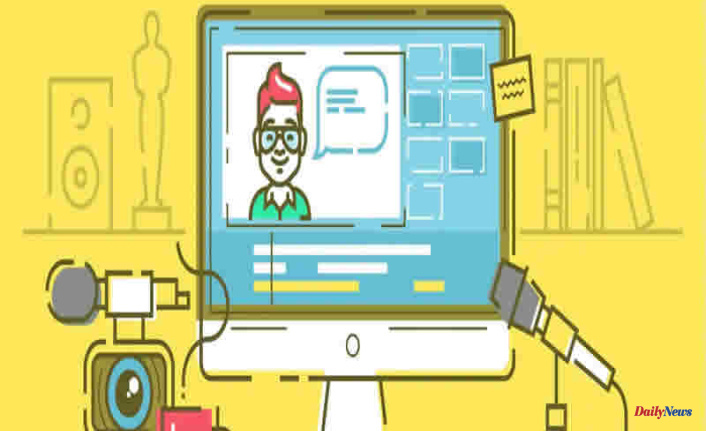The technological development over the past decade has raised an unmatched internet world. Today, imitating the internet speed, we can do anything we want. Everything is possible through the internet, from a rocket launch to generating live events.
Live streaming of the event was a dream for people a few years back, but now any brand can do that for any official launch. On the other hand, with the help of high-speed internet, you also manage a colony speech to go live for the audience.
Well, there are several benefits!
Live streaming of the event helps people understand what is going on from far away. When the crowd is huge, everyone can't listen to or watch the event on stage without a giant screen.
However, live streaming also helps the deaf to follow the speech with real-time captioning. Well, you might not know, but real-time captioning is a huge contribution to live events and other emergencies like courtroom issues.
People who are deaf or facing hard of hearing are dependent fully on the real-time captioning process. It might be the work of a stenographer to use a stenotype machine to translate the phonetic symbols.
After that, using a computer and software, those phonetic symbols are converted into captions to display on a giant screen or computer. Get a better idea here to use real time captioning for your service.
What Is Real-Time Captioning?
Real-time captioning is known as CART (Communication Access Real-time). This real-time instantaneous translation or captioning process helps generate a better resolution for deaf people who have difficulty listening.
Well, we all understand what a caption is. It is a process of displaying words on the screen. So, if you are playing video content, at the bottom, considering captions may help all people and especially deaf people, to understand the content in particular.
In more simple terms, it is a process of converting words into texts in real-time. So, people will be able to see and read the consent by diminishing the pressure of hearing.
Now the process can be executed in two prominent ways.
- Speech recognition.
- Stenography.
Why Use Live-Captioning?
Speech Recognition is best possible for deaf people through real-time captioning. Here you are only using a translator, a computer, and dedicated software to convert the phonetic symbols the translator depicts.
It might seem an easy process, but a few years ago, people were unaware of it. In 2017, Microsoft went for a Switchboard conversational speech recognition task which helped them create a transcription system with only 5.1% error chances for the process.
This was a huge breakthrough, and after that, it never looked back. With the combined process of a professional translator and good software, a real-time captioning service like cart captioning services may help you a lot to help the deaf and also create bigger opportunities by increasing your reach.
For Better Accessibility
Stenography was the basic step of this captioning process, and now we have reached a long way ahead. Now it's time to provide people with new opportunities for better accessibility.
According to the law passed by the Americans With Disabilities Act (ADA) in 1990, people should not be excluded from services due to the lack of accommodations. This, in turn, has provoked the services to generate captions as an auxiliary aid to deaf people.
So, overall this is a better process for finding solutions for deaf people. Real-time captioning has helped many services to provide better accessibility. Previously if there were 100 people at your event, almost 20 would be excluded from the main focus of the event due to the difficulties.
Nowadays, surely it can help almost 95% of people easily access the event through the real-time captioning process.
To Reach More Audience
Reaching more audiences is also possible through this aid. We can surely see CART as an aid to hearing loss; in turn, it provides more audience reach.
Services that want to get a more international audience and deaf people under their radar can easily appreciate this profession. Translation, transcription, and captioning are all happening at once with CART.
Different Types Of Captions And Needs
Before you go for real-time captioning for your services, it's better to understand the difference between subtitles and captioning.
We often understand live captions as subtitles. Well, that is not the fact.
Subtitles come with the translation of languages and then depict it on the screen. So, you are not going to get any difference between the words said in a speech and the texts for subtitles on a screen.
However, closed captioning is different. When you go for captioning, you will need to understand the fact that people want to convey the essence of the event, not just the words or translation between two languages. Captioning is more than that!
It depicts the idea and action of an event or speech, and thus it also tries to copy the vocal inflections, sound effects, emotions, and the music that is being played.
However, it all depends on the audience you want to consider. They might choose one over another depending on their instances and situations. Let’s say someone watching a video in mute will need closed captioning, and this also goes the same for deaf people. But the audience might find subtitles more effective when they can hear the sounds.
What Are The Options For Providing Real-Time Captioning?
The Live event planners always face issues with live event transcription and captioning. Previously the process was high priced as they needed to consider the huge budget of hiring a transcriptionist and also provide them with enough materials.
Well, the good news is that you can now bypass this pricey proposition with the help of various modern methods. Nowadays, the only concern of event planners is to select the right option for them.
Automatic transcription, screech-to-text software, et cetera are on stage, and you just need to decide which one you need. Well, we are here to help you get out of this dilemma.
Hire A Professional Transcriptionist
Hiring a professional transcriptionist is always a viable option for events. A human transcriptionist may play a major role in the medieval world and court hearings. Previously it was the only option for live captioning for us.
Well, you might get some advantages from it. For instance, not all speak loud, and captioning them for AI can be troublesome and error-prone. In turn, the live transcriptionist may help you to discern things properly. Human transcriptions are highly effective for a 20-30 minute speech.
You need accuracy and quality captioning for these short-term events, which is almost impossible without human intervention.
Build A Cloud-Based Transcription Solution
Automatic transcription services have got a new phase with cloud-based transcriptions. This, in turn, is trying to narrow down the gap between the accuracy point of the AI and human transcriptor.
Using a digital audio signal, the automated transcription uses the existing database to transcript speech into text by detecting it.
Find A Speech-To-Text App
Phone-based speech-to-text apps are fine to use, but they are limited to their own hardware systems.
Your phone or tablet does not have enough power or memory to use for a long transcription process. However, it is fine for a one-on-one interview transcription, and the phone apps that you are going to use will also need to provide you with some rolling-out updates.
Well, you can also go for a viable hardware solution for the same purpose.
Benefits Of Hiring Real-Time Captioning Services
Hiring a real-time captioning service is always a viable solution for the organizers. If you really want to provide real-time captioning to the audience, then you should not ignore their essence of workability.
They will provide you with a transcriptor and a giant screen, including viable software to deal with any instances of captioning.
Content For Individuals
Subtitles might not be enough to reach every individual. However, with real-time captioning, you can reach every person with a proper sense of the content by including the feeling of it. So, deaf people are going to get the best service in their lifetime through real-time captioning service.
Easier Understanding
Often only translations are not enough to understand the real content of the concert. Sometimes you need to go through the tone of a person to understand what they are trying to say.
This is where you may want to know the content as it is through real-time captioning services. They are both efficient in providing human and technological resolution. So, ultimately it will be easier for anyone to go through the text speeches.
Refining The Attention And Span Of Watch Time For Deaf People
We have seen deaf people struggling to understand any content properly in the first instance. Most of the time, they need to read the speech texts again and to age to go through the inner sense of the speech giver.
Well, with a real-time captioning service, you will get the most accurate meaning of a sentence to help you understand the content in one instance. So, it is both time-saving and refining for them.












